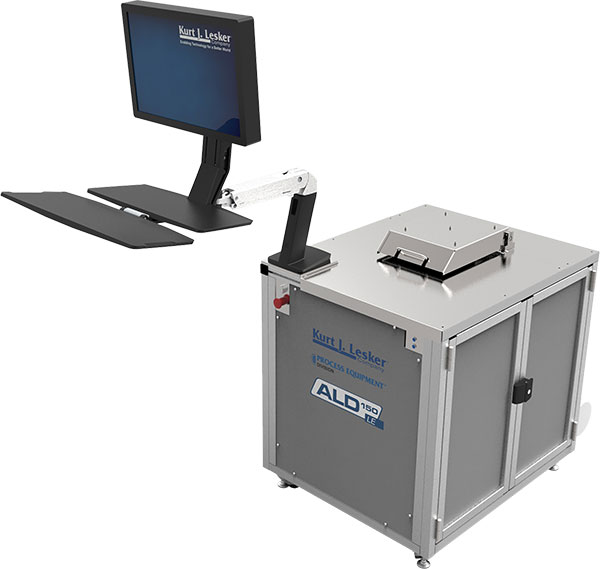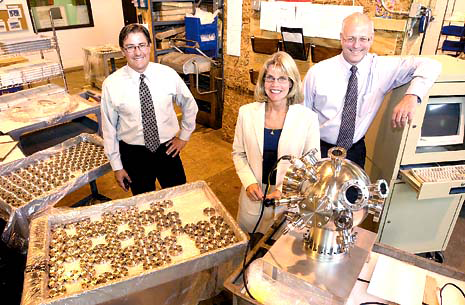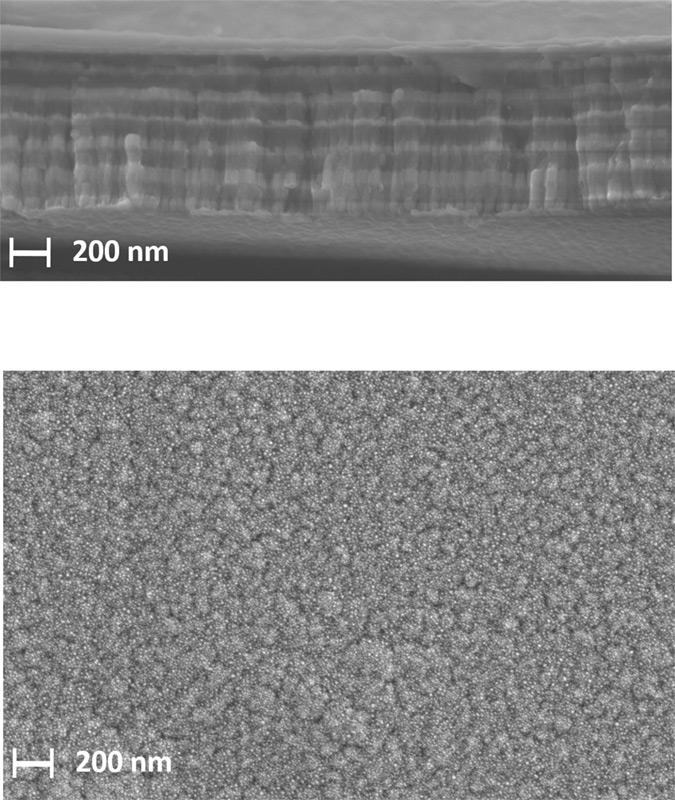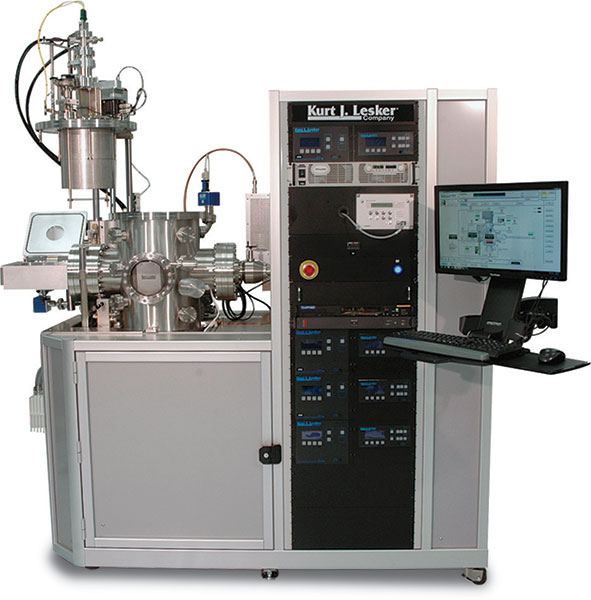June 07, 2021 | By KJLC Innovate
Mina Shahmohammadi from the research group of Professor Christos G. Takoudis, Full Professor in the Departments of Bioengineering and Chemical Engineering at the University of Illinois at Chicago, in collaboration with College of Dentistry, University of Illinois at Chicago, and Kurt J. Lesker Company recently developed conformal atomic layer deposition (ALD) based titanium (IV) oxide (TiO2) thin film processes on Polymethyl Methacrylate (PMMA) displaying excellent surface and mechanical properties for potential engineering, medical, and biomedical applications. The findings were recently published in the Journal of Materials Science.
Read More
Tags:
INNOVATE
Systems
Vacuum Science
Deposition Techniques
April 19, 2021 | By KJLC Innovate
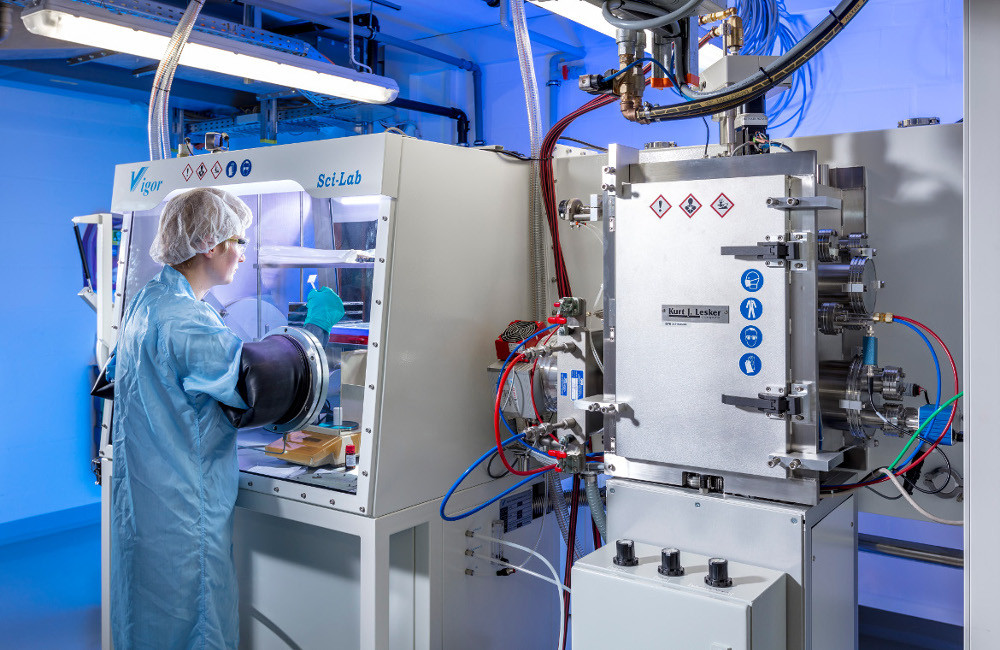 *Photo: ISFH, taken by Salzmann-Fotografie*
*Photo: ISFH, taken by Salzmann-Fotografie*
The Kurt J Lesker Company has been shipping Physical Vapor Deposition (PVD) tools into the field of perovskite solar cells for the last decade and continues to support researchers in this exciting application. Our partner, Dr. Sascha J. Wolter, along with the Future Technologies Photovoltaics group, headed by Dr. Sarah Kajari-Schröder, at the Institute for Solar Energy Research (ISFH) in Hamelin, Germany, have presented a method to determine the acoustic impedance ratio (Z) for two perovskite precursors that are commonly co-deposited using PVD. In their paper "Determination and influence evaluation of the acoustic impedance ratio for thermal evaporation"[1] they report Z values for methylammonium iodide (MAI) of 0.025 ±0.002 and 0.11 ±0.01 for lead (II) iodide (PbI2). Furthermore, the impact of using an incorrect Z-ratio on actual experimental thermal evaporations is investigated.
Read More
Tags:
INNOVATE
Systems
Vacuum Science
Deposition Techniques
March 29, 2021 | By KJLC Blog
To celebrate Women's History Month, we spoke with Cindy Lesker who is currently an Owner, Chairwoman, and Vice President of Information Technology at the Kurt J. Lesker Company. Earlier this year, Cindy was a finalist for the prestigious CIO of the Year award by the Pittsburgh Technology Council.
We caught up with Cindy to find out about her journey to being the Chairwoman and CIO of KJLC and what Women's History Month means to her.
Read More
Tags:
Vacuum Science
Deposition Techniques
Interviews
March 04, 2021 | By KJLC Innovate

When a magnetic field (B in Fig. 1 (a)) is applied to a metal, the electric current (J in Fig. 1 (a)) flowing through the metal will be deflected by the magnetic field so that it is not parallel with the applied electric field (E in Fig. 1 (a)). This phenomenon, known as the Hall effect, is well understood in the classical physics. Later, the research on magnetic materials discovered that in certain magnetic materials, the Berry phase, one of the quantum properties of electrons, can alter the motion of electrons without the presence of an external magnetic field (Fig. 1 (b)). This phenomenon is known as the anomalous Hall effect (AHE). In AHE experiments, two quantities are measured: The longitudinal conductivity σxx, which is the conductivity of the material along the direction of the electric field; and the transverse conductivity σxy, which is the conductivity along the perpendicular direction of the electric field. The ratio between σxy and σxx, defined as the anomalous Hall angle, measures the strength of the intrinsic deflection by the Berry phase: The higher the σxy/σxx is, the more prominent the Berry phase is.
Read More
Tags:
INNOVATE
Systems
Vacuum Science
Deposition Techniques
February 26, 2021 | By KJLC Blog
As we come to the end of Black History Month, we wanted to reflect on the diversity of our customers working with vacuum science and highlight the remarkable achievements in their field of research. To do this, we reached out to one of our wonderful customers, Philip Adderley, who is currently a High Vacuum Associate at a National Research Laboratory based in Virginia.
Phil studied Physics at Morehouse College in Atlanta (B.A.) and Atlanta University (M.A.), before embarking on a career in vacuum at a prestigious National Research Laboratory in Illinois, where he had a major role in the development of the kicker magnets for the antiproton accumulator ring. He also developed the conductive coating for the ceramic beam tubes for these magnets. This period allowed him to pick up extensive expertise in vacuum and alignment technologies.
Read More
Tags:
Vacuum Science
Deposition Techniques
Interviews
February 10, 2021 | By KJLC Blog
To recognize the International Day of Women and Girls in Science and to celebrate all the amazing female customers in scientific research we work with, we reached out to Laura Wagner - a PhD researcher at TU Munich's Walter Schottky Institute (WSI) and Physics Department - to discuss her career path so far, the exciting research she is currently working on with her team, and what this day means to her a as a female scientist at an exciting point in her career.
Read More
Tags:
Vacuum Science
Deposition Techniques
Interviews
January 29, 2021 | By KJLC Innovate
The Kurt J. Lesker Company (KJLC) has supported organic electronics research since producing its first dedicated PVD tool series over 20 years ago, enabling many breakthrough results. Recently a team from CNR NANOTEC (Lecce, Italy) has reported a strategy to improve the stability and durability of flexible top-emitting organic light-emitting diodes in their paper "Flexible distributed Bragg reflectors as optical outcouplers for OLEDs based on a polymeric anode", with results obtained using both KJLC deposition tools and materials.
Read More
Tags:
INNOVATE
Systems
Vacuum Science
Deposition Techniques
January 29, 2021 | By KJLC Innovate

The ability to fabricate flexible nano-thin films is of great interest because of the increased demand for flexible technologies, a paradigm shift in high-tech and consumer electronics, already making significant technological and commercial impact by enabling the emergence of flexible photovoltaics, flexible electronics, flexible smart textiles and flexible displays. Flexible thin films are typically achieved by coating a given material onto a flexible substrate, via a chemical vapour deposition (CVD) process, where the coating ingredients are mostly organic materials and chemicals. Coating flexible thin films from inorganic materials such as metals, functional alloys, heterostructures, semiconductors, oxides and ceramics via solid state DC / RF plasma sputtering is less known, and it is unclear how the flexible substrate affects their properties. This project demonstrated the successful production of flexible magnetic thin films with excellent adhesion and mechanical robustness. Remarkably, the films maintained their structure, integrity and physical properties at any curvature bending applied to the flexible samples.
Read More
Tags:
INNOVATE
Systems
Vacuum Science
Deposition Techniques
January 21, 2021 | By KJLC Innovate
Electrons have two fundamental physical properties, their charge and spin. The charge of electrons has been discovered and carefully measured long time ago[1]. The utilization of the electron charge can be found in all electronic devices. The manipulation of the electron spin, on the other hand, has been proved to be more challenging because of its quantum mechanical nature. To elucidate the physics and to design applications of the electron spin, a research area named spintronics has been established, and its rapid advance has identified the essential role of the electron spin in many fundamental properties of condensed matter systems such as the spin Hall effect[2] and the quantum spin Hall effect[3]. In addition, the research on the electron spin has resulted in numerous applications such as the giant magnetoresistance structures and tunneling magnetoresistance devices[4].
Read More
Tags:
INNOVATE
Systems
Vacuum Science
Deposition Techniques
January 20, 2021 | By KJLC Innovate
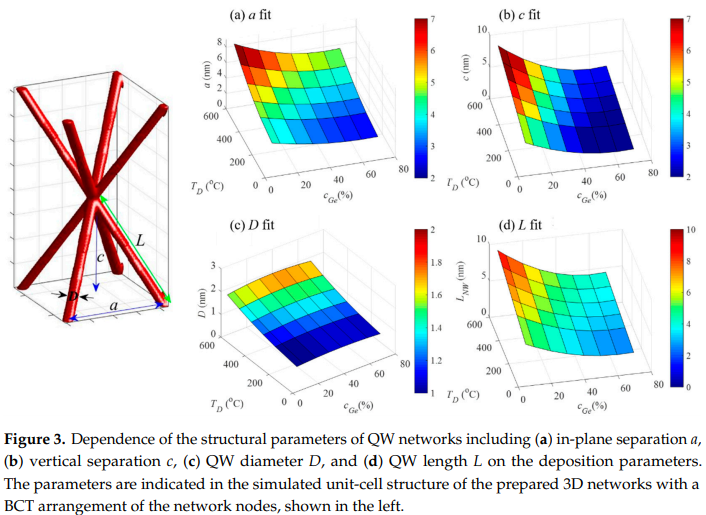
Semiconductor Quantum Wires (QW) are nanoscale structures of semiconductor material whose electro-optical properties are heavily influenced by electron quantum confinement effects, due to their small structure. These structures show great promise for use in applications including sensors, quantum computing, bioelectronic and solar cells [1, 2, 3]. It is stated that, traditionally, 3D structures of QW are fabricated using high-resolution lithography. This is a very complex and expensive method making it less appealing for large scale production of QW devices. A team at the Rudjer Boskovic Institute in Croatia, in collaboration with the National Institute of Chemistry (Ljubljana) and the Slovak Academy of Sciences developed a simple method for tuning the parameters of the QW lattice unit cell by depositing self-assembling Germanium (Ge) QW in an Alumina (Al2O3) matrix by co-sputtering [4]. This straightforward approach involves varying the Ge DC sputtering power, in order to control the Ge concentration in the matrix, and the temperature of the substrate during the deposition.
Read More
Tags:
INNOVATE
Systems
Vacuum Science
Deposition Techniques
Previous Entries
Next Entries
